Economics Group Project. Bisrat kinfemicahel. airline analysis PDF

| Title | Economics Group Project. Bisrat kinfemicahel. airline analysis |
|---|---|
| Course | Principles Of Economics I |
| Institution | New York Institute of Technology |
| Pages | 14 |
| File Size | 527.2 KB |
| File Type | |
| Total Downloads | 41 |
| Total Views | 154 |
Summary
Economics Group Project. Bisrat kinfemicahel. airline analysis...
Description
New York Institute of Technology
Macroeconomics Project
ECON 202 - M01 Prof. Bisrat Kinfemichael 04.30.2020
Part 1. I.
Russian economy: Russian Federation is a transcontinental country, its territory extends from Europe to Asia. The geography of this country is essential to the country's economic activity. Russia is the largest country with an area of 17,125,200 kilometres2 or 6,612,100 miles2 (Terry, 2018). Therefore Russia contains over 30% of the world’s natural resources. With an advantage of natural resources, natural gas production is ranked number one in the world and the third largest producer of oil. (Korabik, 1997). Rather than that, Russia is known for how the government controls its mix and transitional economy, which can be defined as the transition from a centrally planned economy to market economy. Based on the data contributed from the World Bank, Russia is considered an upper middle universal income country. A. Russian GDP: Table 1: Gross Domestic Product (based year: 2016) Subject Descriptor
real GDP
Exchange Value
real GDP
real GDP per capita
Inflation
Unemployment rate
Units
National currency
Percent change
Dollar currency
National currency
Index
Percent of total labor force
Scale
Billions
Billions
unit
2010
78,571.2
70.2
$1,119.25
549,833.45
65.994
7.358
2011
82,551.7
70.2
$1,175.95
577,284.62
71.564
6.508
2012
85,606.2
70.2
$1,219.46
597,391.49
75.196
5.45
2013
87,147.2
70.2
$1,241.41
606,452.33
80.274
5.5
2014
87,757.1
70.2
$1,250.10
599,843.47
86.554
5.158
2015
85,731.9
70.2
$1,221.25
585,200.68
100
5.575
2016
86,014.2
70.2
$1,225.27
585,927.79
107.042
5.525
2017
87,416.4
70.2
$1,245.25
595,074.20
110.985
5.2
2018
89,387.5
70.2
$1,273.33
608,906.68
114.18
4.8
2019
90,356.4
70.2
$1,287.13
615,801.75
119.524
4.623
2020
92,046.4
70.2
$1,311.20
627,794.93
123.734
4.76
(International Monetary Fund, 2019)
Table 2: Annual Growth Rate of Russia National currency Dollar currency 2010 Value
78,571.2
$1,119.25
2020 Value
92,046.4
$1,311.20
Annual Growth Rate
1.77%
1.77%
Graph 1: Real Gross Domestic Product
Russian Trade: Russia has been the 14th largest exporter in the world. The data retrieved from 2017 shows that the main export goods from Russia is crude petroleum, 28.3%. (OEC, 2017). It has the second largest coal reserves, the eighth largest oil reserves, and is one of the largest producers of oil. It is the third largest energy user. Since the demand for medication and technology is significant in Russia, the most imported good is Packaged Medicaments, which represents 3.71%. This is followed by Cars with 3.47%.
Table 3: Russian Trade Year
Export trade
Import trade
Trade balance
2010
$384,018,100,834
$230,872,526,177
$153,145,574,657
2011
$506,019,488,463
$310,484,060,191
$195,535,428,272
2012
$480,164,826,010
$324,004,534,695
$156,160,291,315
2013
$507,047,151,947
$324,957,279,032
$182,089,872,915
2014
$449,509,107,174
$295,466,859,453
$154,042,247,721
2015
$316,871,039,550
$184,618,908,409
$132,252,131,141
2016
$269,617,745,272.2 $180,982,264,690.30
$88,635,480,581.91
2017
$341,706,328,733.5 $221,653,477,611.98
$120,052,851,121.50
(OEC, 2017)
II.
Chinese economy: The People's Republic of China is known for the largest population in the world with more than 1.428 billion citizens, and the second largest in the world by nominal GDP. By its political stance with a centralized government, China had its economic system practice as a centrally-planned system for generations. Recently, the economy of China has transitioned to a market-oriented economy. Making China become the world’s fastest growing economy (Schwart; Abrams, 2015). Similar to Russia, China has diverse natural resources with an estimated worth of $23 trillion, 90% of which are coal and rare earth metals. (Craig, 2017). But beside the growth of Chinese economy, the socioeconomic cost of environmental pollution is at an alarming rate.
A. Chinese GDP Table 4: Gross Domestic Product (based year: 2015) Subject Descriptor
real GDP
Exchange Value
Units
National currency
Percent change
Scale
Billions
real GDP
real GDP per capita
Unemployment Inflation rate
Dollar currency
National currency
Percent of total labor force
Billions
unit
Index
2010
¥47,853.47
6.28
$7,619.98
35,687.31
87.06
4.14
2011
¥52,399.55
6.28
$8,343.88
38.890.82
91.758
4. 09
2012
¥56,539.11
6.28
$9,003.04
41,755.87
94.186
4.09
2013
¥60,494.16
6.28
$9,632.83
44,791.85
96.658
4.05
2014
¥65,398.45
6.28
$10,413.77
47,812.18
98.58
4.09
2015
¥69,910.94
6.28
$11,132.32
50,858.38
100
4.05
2016
¥74,619.02
6.28
$11,882.01
53,965.77
102.003
4.02
2017
¥79,660.95
6.28
$12,684.86
57,306.74
103.592
3.9
2018
¥84,892.63
6.28
$13,517.93
60,838.36
105.767
3.8
2019
¥90,104.01
6.28
$14,347.77
64,352.04
108.206
3.8
2020
¥95,356.96
6.28
$15,184.23
67,888.94
110.838
3.8
(International Monetary Fund, 2019) Table 5: Annual Growth Rate of China National currency
Dollar currency
2010 Value
¥47,853.47
$7,619.98
2020 Value
¥95,356.96
$15,184.23
Annual Growth Rate
7.96%
7.96%
Graph 2: Real Gross Domestic Product
B. Chinese Trade: China has an advantage based on its geography which makes the country the largest exporter in the world. China exported $2.41 trillions in 2017. The most recent exports are led by Broadcasting Equipment which represent 9.6% of the total exports of China, followed by Computers, which account for 6.08%. For importing China imported $1.54 trillions of goods in the same year. The most recent imports are led by Integrated Circuits which represent 13.5% of the total imports of China, followed by Crude Petroleum, which account for 9.4%. Table 6: Chinese Trade Year
Export Value
Import Value
Trace Balance
2010
$1,750,400,000,000
$1,103,800,000,000
$646,600,000,000
2011
$2,037,500,000,000
$1,393,600,000,000
$643,900,000,000
2012
$2,115,400,000,000
$1,415,400,000,000
$700,000,000,000
2013
$2,247,600,000,000
$1,557,600,000,000
$690,000,000,000
2014
$2,368,800,000,000
$1,534,100,000,000
$834,700,000,000
2015
$2,372,800,000,000
$1,271,900,000,000
$1,100,900,000,000
2016
$2,269,400,000,000
$1,234,000,000,000
$1,035,400,000,000
2017
$2,411,800,000,000
$1,538,500,000,000
$873,300,000,000
(OEC, 2017)
III. Comparison and contrasting Russian and Chinese Economy
Graph 3: Real Gross Domestic Product As shown in Graph 3, in the last ten years China had a higher Real GDP compared to Russia and it continues to grow substantially, according to its growth rate. Being called the ‘‘world’s factory,’’ China’s market-oriented reforms led the country to an unprecedented economic performance, offering it the title of the world’s second largest economy by real GDP. In 2015, China’s real GDP weighted $ 7.619 trillion, Russia being down by $ 6.500 trillion. In the next ten years China managed to double its real GDP, while Russia increased it by just 17%.
Graph 4: Real Gross Domestic Product Per Capita
Before comparing GDP per capita, we should compare the population of China and Russia. In 2015 China had 1.406 billion people and Russia 144.9 million people (worldometers.info). China had almost over 10-times more population than that of Russia in 2015, nearly the same in 2020. However, Russia GDP per capita during 2015 was $8,336.19 and China was $8098.47. That means that Chinese GDP per capita is almost equal to the Russian one in 2015, only 3-times more than that of its neighbour. In 2020, Chinese GDP per capita passed the Russian one by 20%. Thus, since 2010, Chinese GDP per capita almost doubled, increasing by almost 90%, while the Russian one just by 14%. Graph 5: Unemployment Rate
In the last ten years Russia has seen a considerable decrease in unemployment, from 7.358 to 4.76, which means almost 2.6 percent. Compared to Russia, China maintained its unemployment rate more
constant, decreasing by 0.34 percent.
Graph 6: Inflation Inflation looks controlled in both countries, in spite of it being higher in Russia, and lower in China. Since 2010, Russia has seen an increase of 87% in inflation due to the forign exchange rate movements and also the increase in VAT (Value Added Taxes). Compared to Russia, China kept its inflation rate more constant, increasing it by 27%.
Graph 7: Net Export In terms of trade balance, China is the overall champion, nevertheless the Russian net export is also imposing. While Russian export is mainly based on energy exports, China has a more diversified and higher value added export economy which
put the country on top of the charts.
IV How are the countries influenced by developments in the United States? The respective markets of each government are intertwined and connected, whereas larger countries with larger markets have a bigger impact on the overall market. This includes countries like Russia, China and the United States of America. With the high level of productivity within America, the developments within the country have a lasting effect on the market. Some key developments include, technology, trade relations and the recent recession of 2008. Both Russia and China have both been affected by the developments in America. After a rocky history with the US, both Russia and the US have been able to overcome the past and engage in trade relations once again. Although that may hold true, there have been interesting exchanges between both countries. According to state.gov, “ Since 2014, the United States and our European and G-7 partners imposed sanctions on Russia…” This led to the recession that occured the following year, in 2015. This forced Russia to become more independent and rely more on the goods they produce and less on imported goods. China has been able to become the fastest country to develop economically due largely to its ability to trade relations to the US. After the recession of 2008, America fell out of being the primary world power. America took years to recover from the recession, whereas China was able to quickly recover due to its control over the market. Fast Forward to 2020, the global economy is more balanced with more countries amidst the top of it. Near the top, there’s countries like China and America. For most of the decade, America’s number one trade partner was China. According to the Library of Congress, t his is due to the value of China's exports, which includes advanced technology products. Over the recent years the large imbalance in regards to their bilateral trading have been addressed. This is due to China’s exports being much larger compared to America’s. This is the cause of the recent tariffs America has imposed upon Chinese exports, in an attempt to reduce the trading imbalance. Part 2. Convergence Test for US’ Accommodation and Food Services industry (Millions of chained 2012 dollars). This table presents the data of real GDP by 51 states in two different years, the natural logarithm of initial output (output in 1997), and the values of growth measured by Compound Annual Growth Rate (CAGR).
GeoName
1997
2019
Log of GDP in 1997 Growth Value by CAGR
Alabama
3526.3
5293.9
3.547319257
0.018640054
Alaska
1011
1270.3
3.004751156
0.010431907
Arizona
6677.5
10413.3
3.824613897
0.020402626
Arkansas
2085.9
3011.4
3.319293484
0.016831196
California
44766.1
75084.6
4.650949261
0.023785948
Colorado
6515.7
10538
3.81396108
0.022093857
Connecticut
4390.8
5564.6
3.642543656
0.010826995
Delaware
1118.6
1387.2
3.048674815
0.009830249
District of Columbia
2570.9
3917.5
3.410085184
0.019329796
Florida
24193.2
38547.2
4.383693316
0.021399011
Georgia
9961
13174.2
3.99830294
0.012789408
Hawaii
5361.4
6983.5
3.72927821
0.012087244
Idaho
1172
2089.3
3.068927612
0.026626376
Illinois
13835.1
21407.3
4.140982303
0.020040121
Indiana
5934.6
7805.7
3.773391452
0.01253494
Iowa
2832.4
3481.2
3.452154586
0.009419205
Kansas
3121.9
3429
3.494418988
0.004273966
Kentucky
4041.6
5535.2
3.606553329
0.014397526
Louisiana
5498.9
7469.1
3.740275822
0.014016709
Maine
1596.9
2420.8
3.203277721
0.019090566
Maryland
8204.3
9566.8
3.914041532
0.007008095
Massachusetts
9046.8
13810.3
3.956494989
0.019413473
Michigan
9276.6
12514.3
3.967388831
0.013701051
Minnesota
5523.1
7321.5
3.742182907
0.012894974
Mississippi
2688.9
3768.8
3.429574651
0.01546493
Missouri
6237.3
7610.9
3.794996633
0.009088049
Montana
1111.9
1603.4
3.04606573
0.016778112
Nebraska
1840.8
2212.8
3.265006606
0.008401387
Nevada
15243.4
18392.4
4.183081846
0.008572486
New Hampshire
1670.7
2585
3.222898473
0.020038251
New Jersey
14155.4
11885
4.150922146
-0.007914833
New Mexico
2329.9
2740.4
3.367337281
0.007403569
New York
26395.2
37910.8
4.421524957
0.016593156
North Carolina
8472.7
13526.2
3.928021829
0.021490358
North Dakota
690
992.8
2.838849091
0.016675585
Ohio
11518.8
14042.2
4.061407238
0.009044594
Oklahoma
3824.9
4562.2
3.582620085
0.008044578
Oregon
3712.6
6929.1
3.56967816
0.028769597
Pennsylvania
13315.6
14925.2
4.12436074
0.005200511
Rhode Island
1318
1919.7
3.11991541
0.017240267
South Carolina
4574.2
8002.7
3.66031515
0.02575084
South Dakota
911.9
1356.9
2.959947216
0.018229049
Tennessee
7395
11223.2
3.868938178
0.019143614
Texas
26895.1
43316.3
4.429673163
0.021899295
Utah
2262.5
3652.4
3.354588588
0.022007492
Vermont
1041.5
1463.6
3.017659274
0.015585533
Virginia
8398.9
11870
3.92422241
0.015847601
Washington
7729.9
14023.7
3.888173876
0.02744499
West Virginia
1633.8
2060
3.213198892
0.010591947
Wisconsin
5131...
Similar Free PDFs

Alaska airline case analysis
- 9 Pages

Airline
- 4 Pages
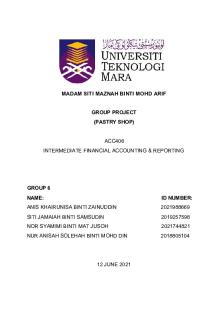
Group Project Account ( Group 6)
- 21 Pages

Economics Project Class 9
- 5 Pages

Economics Microeconomics Project
- 4 Pages
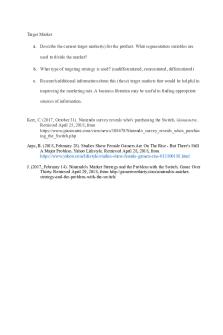
Group Project- Target Market
- 4 Pages
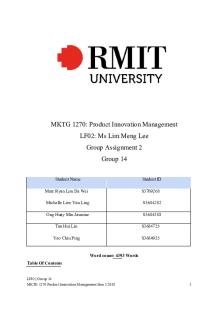
PIM Group Project 2
- 68 Pages
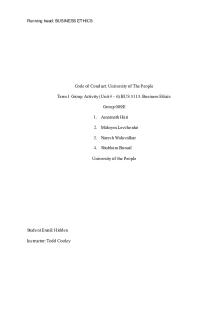
Group Project 009E Final
- 21 Pages
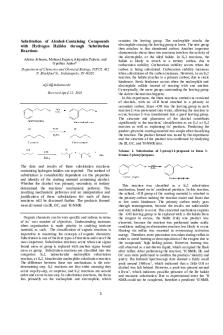
Group Project JOC Note
- 4 Pages

Group Project Proposal
- 1 Pages
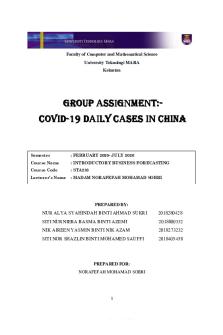
Group Project STA 233
- 33 Pages
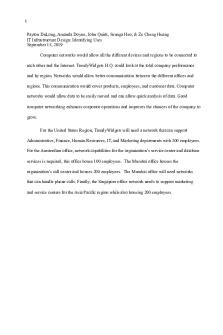
IST Group Project
- 19 Pages

Group project guidelines
- 1 Pages

group project sta108
- 55 Pages
Popular Institutions
- Tinajero National High School - Annex
- Politeknik Caltex Riau
- Yokohama City University
- SGT University
- University of Al-Qadisiyah
- Divine Word College of Vigan
- Techniek College Rotterdam
- Universidade de Santiago
- Universiti Teknologi MARA Cawangan Johor Kampus Pasir Gudang
- Poltekkes Kemenkes Yogyakarta
- Baguio City National High School
- Colegio san marcos
- preparatoria uno
- Centro de Bachillerato Tecnológico Industrial y de Servicios No. 107
- Dalian Maritime University
- Quang Trung Secondary School
- Colegio Tecnológico en Informática
- Corporación Regional de Educación Superior
- Grupo CEDVA
- Dar Al Uloom University
- Centro de Estudios Preuniversitarios de la Universidad Nacional de Ingeniería
- 上智大学
- Aakash International School, Nuna Majara
- San Felipe Neri Catholic School
- Kang Chiao International School - New Taipei City
- Misamis Occidental National High School
- Institución Educativa Escuela Normal Juan Ladrilleros
- Kolehiyo ng Pantukan
- Batanes State College
- Instituto Continental
- Sekolah Menengah Kejuruan Kesehatan Kaltara (Tarakan)
- Colegio de La Inmaculada Concepcion - Cebu

